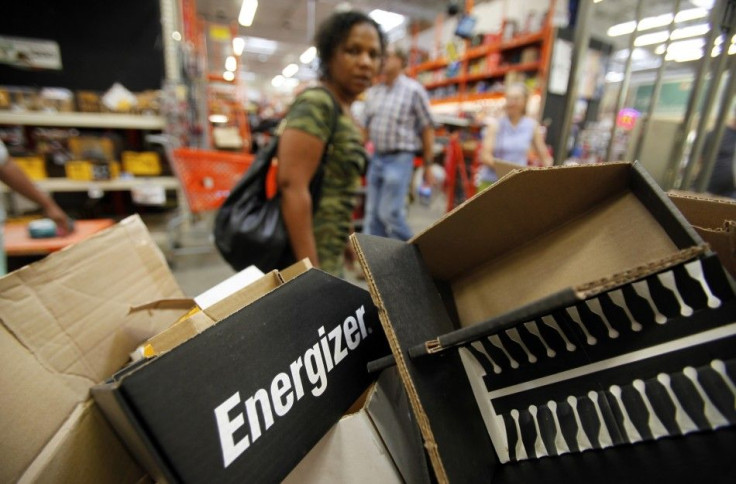Irene: 270,000 on Long Island Await Power, Start Cleanup

About 270,000 Long Islanders, just under a quarter of the population, were still waiting for power to be restored three days after Tropical Strom Irene made landfall just west of Long Beach.
The Long Island Power Authority said outages from the former hurricane had reached 571,000 late Sunday and Monday, a new record for Nassau and Suffolk Counties. LIPA serves just about all of Long Island's 1.2 million residents save for a handful of communities like Freeport, Greenport and Rockville Centre, with their own village plants.
Nassau County was a checkerboard of power, with neighbors on one side of a street enjoying electricity and hot water while residents on the other side were in the dark.
LIPA reported that by late Monday it had restored power to just about all hospitals, nursing homes and senior facilities save for a branch of the North Shore University-Long Island Jewish hospital network in Syosset.
Workers from Nassau and Suffolk County as well as the smaller units like towns and villages, remained hard at work clearing fallen trees and limbs. Shopkeepers removed masking tape and plywood from storefronts that had been put up in haste Saturday.
The Long Island Rail Road and Long Island Bus, the two public systems that serve as many as 420,000 daily passengers, restored partial service Tuesday, after spotty Monday service. Even several of the lines that had been put back into service went dark briefly when LIPA reported power outages.
That happened on the Port Washington line late Monday, when service stopped for about an hour, frustrating travel plans of Manhattan tennis fans seeking to get to the U.S. Open at the Mets-Willets Point station in Flushing, Queens.
The Long Island Rail Road, the largest commuter line in the country, as well as one of the oldest, is entirely electrified. LIRR President Helena Williams said crews would try to restore complete service east of Ronkonkoma, as well as on the Long Beach, Oyster Bay and Port Jefferson lines. They were also restoring crossing gates that had been removed before the hurricane.
The LIRR promised full service would be restored Wednesday.
Trains to Long Beach, which experienced a record storm surge Sunday morning, travel over a trestle spanning Reynolds Channel from the mainland. Much of Long Beach, a city of 33,000 with many apartment buildings built nearly up to the Atlantic Ocean, was still flooded.
Tropical Storm Irene also caused flooding in many south shore communities that jut into Great South Bay, allowing some residents to moor small boats out back. They include Freeport, Oceanside, South Merrick and South Baldwin, where TV shots showed residents pumping out water and debris.
That's one reason why local officials had ordered residents in areas less than 10 feet above sea level to evacuate beginning Friday.
Many LIRR lines had downed trees and were flooded, especially in narrow channels and crossings all over Long Island.
Officials said it was too early to assess damage in monetary terms. Nassau County Executive Edward Mangano and Suffolk's Steve Levy, both Republicans, said they had not had time yet to compute damages. The storm closed most businesses Saturday and Sunday, then power failures closed many more afterwards.
For Nassau, loss of sales taxes could be critical because they account for nearly half of annual revenue. The county itself is under review by the Nassau Interim Financial Authority (NIFA) because of budgetary problems. County residents defeated a proposed $400 million reconstruction of the Nassau Coliseum on Aug. 1, which NIFA had questioned.
In Great Neck, a community of about 45,000 on Nassau's north shore, residents resumed routines, sharing tips and offering neighbors without power shelter, hot showers and food.
Gas service, provided by National Grid, stayed on, so even homeowners without electricity could prepare food or heat water for washing.
The main Great Neck Library, on the west side, was closed due to power loss, but the Station Branch, above a Waldbaum's supermarket, was humming Monday night. Swimmers flocked to the reopened Parkwood Pool, which the park district had closed Saturday. The pool bottom was filled with green leaves swept in by Irene.
At Temple Israel, a 930-member Conservative congregation, services continued to be conducted outdoors for the third day. Monday night, for the second time, the evening service was conducted by flashlight on the entrance patio.
Rabbi Howard Stecker, whose home on Polo Rd. is just south of Great Neck North High School, which had sheltered 30 people who'd evacuated homes in Kings Point, jokingly asked the nine other congregants Monday night if they had any special connections to get their power back.
A June 2010 micro-burst in the area felled about 3,000 trees and largely tore down the entire power grid in central Great Neck, all of which had been replaced by LIPA. Residents of the areas without power, including the Strathmore section, said they did not understand why LIPA had predicted their homes would be dark until Labor Day.
© Copyright IBTimes 2024. All rights reserved.












